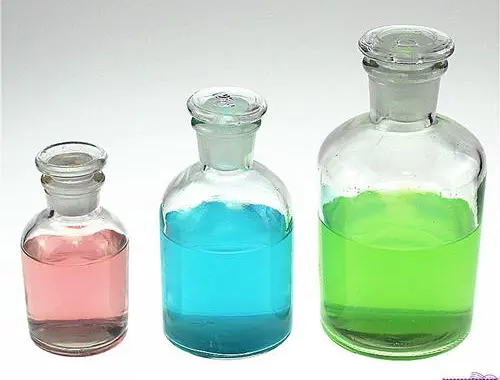Yüzme Havuzlarında Siyanürik Asit (Stabilizatör) Ne İşe Yarar
Siyanürik asit, herhangi bir açık hava havuzunun kimyasının hayati bir bileşenidir.
Havuzunuzun klor ve pH seviyeleri gibi diğer kimya faktörlerinden çok daha az tartışılsa da, havuzunuzda ideal siyanürik asit seviyelerini korumak, bu diğer kimyasalları dengede tutmak için çok önemlidir.
Bu kapsamlı siyanürik asit kılavuzunda, bu asidin ne olduğunu, havuzlarda nasıl kullanıldığını ve görebileceğiniz diğer isimleri tartışacağız.
Yüzme havuzlarını insanların kullanması için temiz ve güvenli tutmak için kullanılan birçok farklı kimyasal vardır. Bu kimyasallardan biri siyanürik asit veya dengeleyici olarak adlandırılır. Ancak bu kimyasal tam olarak ne yapar ve neden önemlidir?
Siyanürik asit, yüzme havuzlarında kloru stabilize etmek için kullanılan bir kimyasal türüdür. Klor, yüzme havuzlarında bakteri ve diğer mikroorganizmaları öldürmek için kullanılan en yaygın kimyasallardan biridir. Ancak, havuzunuzu uzun süre temiz ve güvenli tutmak istiyorsanız, bu bir sorun olan güneş ışığı ile parçalanabilir. Siyanürik asit burada devreye giriyor.
Bir havuza siyanürik asit eklendiğinde, klor molekülleri ile bağlanır ve onların güneş ışığı tarafından parçalanmasını önlemeye yardımcı olur. Bu, havuzdaki klorun daha uzun süre dayanacağı ve havuzu temiz tutmak için daha fazla klor eklemenize gerek kalmayacağı anlamına gelir.
Ancak siyanürik asit, kloru stabilize etmekten daha fazlasını yapar. Ayrıca havuzda yosun oluşumunun önlenmesine yardımcı olur. Algler, suyun yeşil ve çekici görünmemesine neden olabileceğinden, yüzme havuzlarında büyük bir sorun olabilir. Havuza siyanürik asit ekleyerek, ilk etapta yosun oluşumunun önlenmesine yardımcı olabilirsiniz.
Siyanürik asidin bir başka faydası da paradan tasarruf etmenize yardımcı olabilmesidir. Havuzdaki kloru dengeleyerek ve yosun oluşumunu önleyerek, eskisi kadar klor veya diğer kimyasalları kullanmanıza gerek kalmayacak. Bu, zaman içinde havuz bakımında paradan tasarruf etmenize yardımcı olabilir.
Ancak, siyanür asidi doğru kullanmak önemlidir. Çok fazlası aslında klorun etkinliğini azaltabilir ve havuzu daha az güvenli hale getirebilir. Siyanürik asit seviyelerinin açık havuzlarda 30 ile 50 ppm arasında, kapalı havuzlarda 10 ile 30 ppm arasında tutulması önerilir.
Sonuç olarak, siyanürik asit yüzme havuzlarının temiz, güvenli ve kullanışlı olması için önemli bir kimyasaldır. Kloru dengeleyerek ve yosun oluşumunu önleyerek, havuz bakımında zaman içinde paradan tasarruf etmenize yardımcı olabilir. Sadece doğru kullandığınızdan emin olun ve en iyi sonuçlar için seviyeleri önerilen aralıkta tutun.
Swimming pools require regular maintenance and care to ensure they remain clean and safe for swimmers. One crucial aspect of maintaining a swimming pool is monitoring the levels of cyanuric acid, also known as stabiliser. Cyanuric acid plays an essential role in keeping the chlorine levels stable and preventing it from dissipating quickly due to sunlight. This article aims to delve into what cyanuric acid does in swimming pools and how to test the levels.
What does Cyanuric Acid do in Swimming Pools?
Cyanuric acid is a chemical compound that acts as a stabiliser in swimming pools. It helps to prolong the lifespan of chlorine in the water by shielding it from the sun’s UV rays, which can break down the chlorine quickly. Without cyanuric acid, pool owners would have to add chlorine more often, leading to higher costs.
Cyanuric acid also helps to maintain the pH level of the pool water, which is necessary for a comfortable swimming experience. This is because unstable pH levels can cause skin and eye irritation and damage pool equipment, leading to an increase in maintenance costs.
How to Test Cyanuric Acid Levels
Testing the cyanuric acid levels in your swimming pool is vital for ensuring its safety and longevity. Here are the steps to test the cyanuric acid levels in your pool:
Step One: Obtain a Cyanuric Acid Testing Kit
You can purchase a cyanuric acid testing kit at any pool supply store. These kits typically come with testing strips, a comparator, and a chart that helps you interpret the results.
Step Two: Collect a Sample of Pool Water
Using a clean plastic container, collect a sample of pool water from approximately one foot below the surface. Be sure to collect enough water to fill the testing vial.
Step Three: Test the Cyanuric Acid Levels
Dip the testing strip into the water sample and hold for the recommended time. Next, compare the strip’s color to that on the chart provided in the testing kit. The color of the strip corresponds to a specific cyanuric acid level in the water.
If the cyanuric acid levels in the pool are too high, it can reduce the effectiveness of the chlorine, leading to the growth of harmful bacteria and algae. On the other hand, low cyanuric acid levels could cause the chlorine to dissipate too quickly, leading to higher chlorine costs.
In conclusion, cyanuric acid plays a crucial role in maintaining clean and safe swimming pools.
Problems Caused by Low Cyanuric Acid Levels
Low cyanuric acid levels in pools can be problematic. Without the stabilizing effect of cyanuric acid, the chlorine in the pool will be weakened by the sun’s rays, which will require a lot more chlorine to maintain a safe level of sanitation in the pool.
In addition, low cyanuric acid levels can cause the pool to be vulnerable to bacteria and algae, as there will be inadequate protection against the sun’s UV rays. This can lead to cloudy and algae-filled water, which is not only unappealing but also poses health risks for swimmers.
Another problem caused by low cyanuric acid levels is that it can lead to an imbalanced pH level in the pool, making the water more acidic. This can cause skin irritation and other health issues for swimmers, as well as damage to the pool’s infrastructure.
Conclusion
In conclusion, cyanuric acid is an essential chemical in maintaining a healthy and safe swimming pool. It helps to stabilize chlorine, protects against UV rays, and reduces the amount of chlorine needed. Low cyanuric acid levels can cause various problems leading to bacterial growth, imbalanced pH levels, algae, skin irritation, and structural damage to the pool. Therefore, it is important to test the cyanuric acid levels in your pool regularly and maintain them at an appropriate level to ensure a clean and enjoyable swimming experience.

